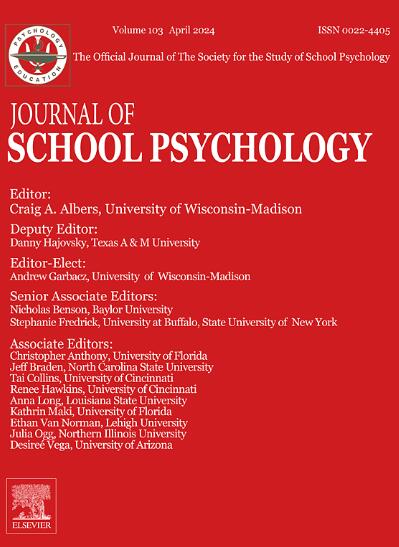Concentration toward the mode: Estimating changes in the shape of a distribution of student data
IF 4.1
1区 心理学
Q1 PSYCHOLOGY, SOCIAL
引用次数: 0
Abstract
When making comparisons between groups of students, a common technique is to analyze whether there are statistically significant differences between the means of each group. This convention, however, is problematic when data are negatively skewed and bounded against a performance ceiling, features that are typical of data in education settings. In such a situation, we might be particularly interested to observe group differences in the left tail, specifically among students who have room to improve, and conventional analyses of group means have limitations for detecting such differences. In this article, an alternative to these conventions is presented. Rather than comparing the means of two groups, we can instead compare how closely student data are concentrated toward the modes of each group. Bayesian methods provide an ideal framework for this kind of analysis because they enable us to make flexible comparisons between parameter estimates in custom analytical models. A Bayesian approach for examining concentration toward the mode is outlined and then demonstrated using public data from a previously reported classroom experiment. Using only the outcome data from this prior experiment, the proposed method observes a credible difference in concentration between groups, whereas conventional tests show no significant overall differences between group means. The present article underscores the limitations of conventional statistical assumptions and hypotheses, especially in school psychology and related fields, and offers a method for making more flexible comparisons in the concentration of data between groups.
向模式集中:估计学生数据分布形状的变化
在对各组学生进行比较时,一种常用的方法是分析各组平均值之间是否存在统计意义上的显著差异。然而,当数据呈负偏态并以成绩上限为界时,这种常规方法就会出现问题,而这正是教育环境中数据的典型特征。在这种情况下,我们可能特别有兴趣观察左侧尾部的组间差异,尤其是那些还有待提高的学生,而传统的组间均值分析在检测这种差异方面存在局限性。在本文中,我们提出了一种不同于这些常规的方法。与其比较两组的均值,不如比较学生数据向各组模式集中的程度。贝叶斯方法为这种分析提供了一个理想的框架,因为它使我们能够灵活地比较自定义分析模型中的参数估计。本文概述了一种贝叶斯方法,用于研究向模式集中的情况,然后使用先前报告的课堂实验中的公共数据进行了演示。仅使用该先前实验的结果数据,所提出的方法就能观察到组间浓度的可信差异,而传统测试则显示组间平均值没有显著的整体差异。本文强调了传统统计假设和假说的局限性,尤其是在学校心理学和相关领域,并提供了一种方法,可以更灵活地比较组间数据的集中程度。
本文章由计算机程序翻译,如有差异,请以英文原文为准。
求助全文
约1分钟内获得全文
求助全文
来源期刊

Journal of School Psychology
PSYCHOLOGY, EDUCATIONAL-
CiteScore
6.70
自引率
8.00%
发文量
71
期刊介绍:
The Journal of School Psychology publishes original empirical articles and critical reviews of the literature on research and practices relevant to psychological and behavioral processes in school settings. JSP presents research on intervention mechanisms and approaches; schooling effects on the development of social, cognitive, mental-health, and achievement-related outcomes; assessment; and consultation. Submissions from a variety of disciplines are encouraged. All manuscripts are read by the Editor and one or more editorial consultants with the intent of providing appropriate and constructive written reviews.
 求助内容:
求助内容: 应助结果提醒方式:
应助结果提醒方式:


